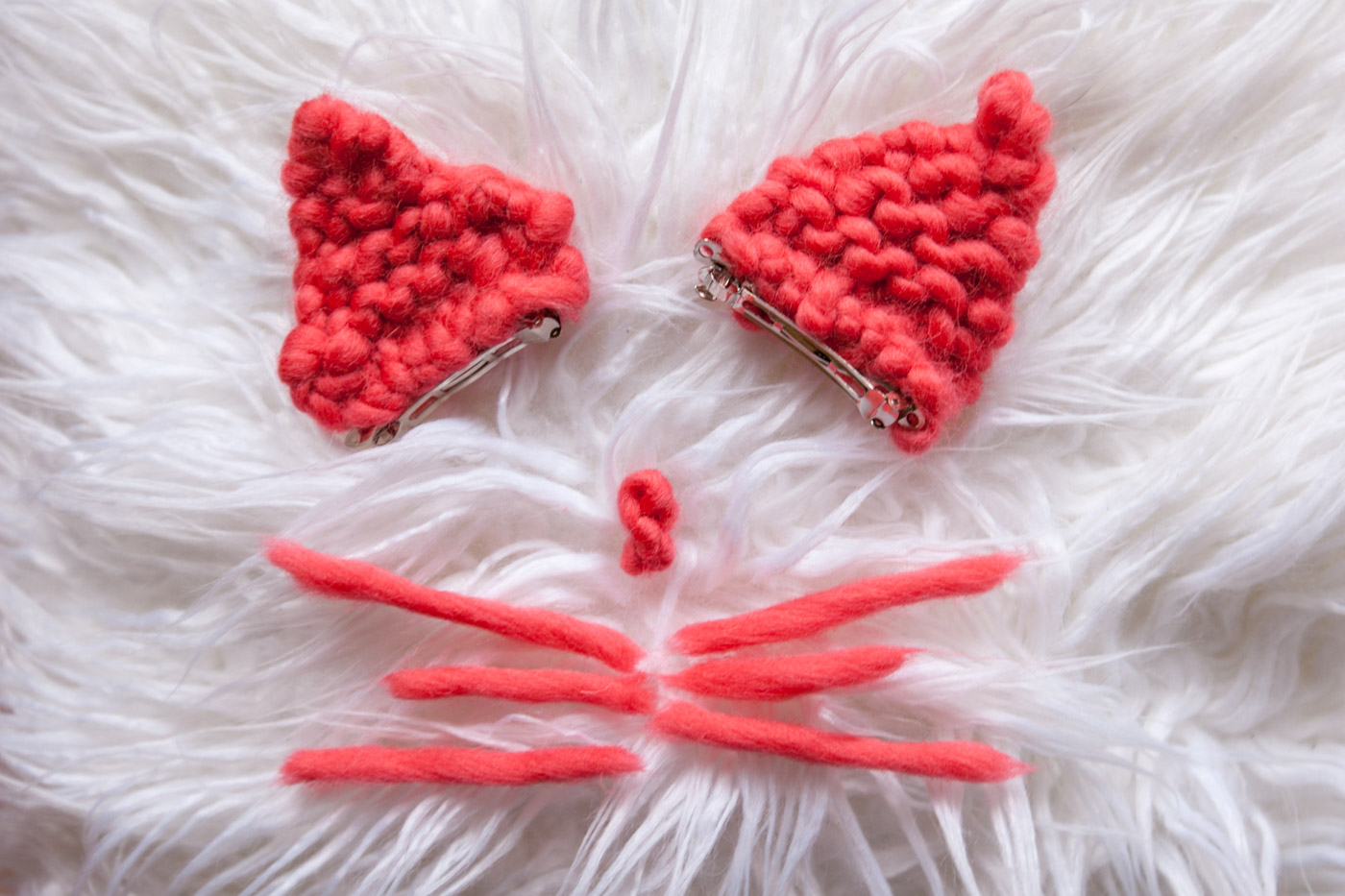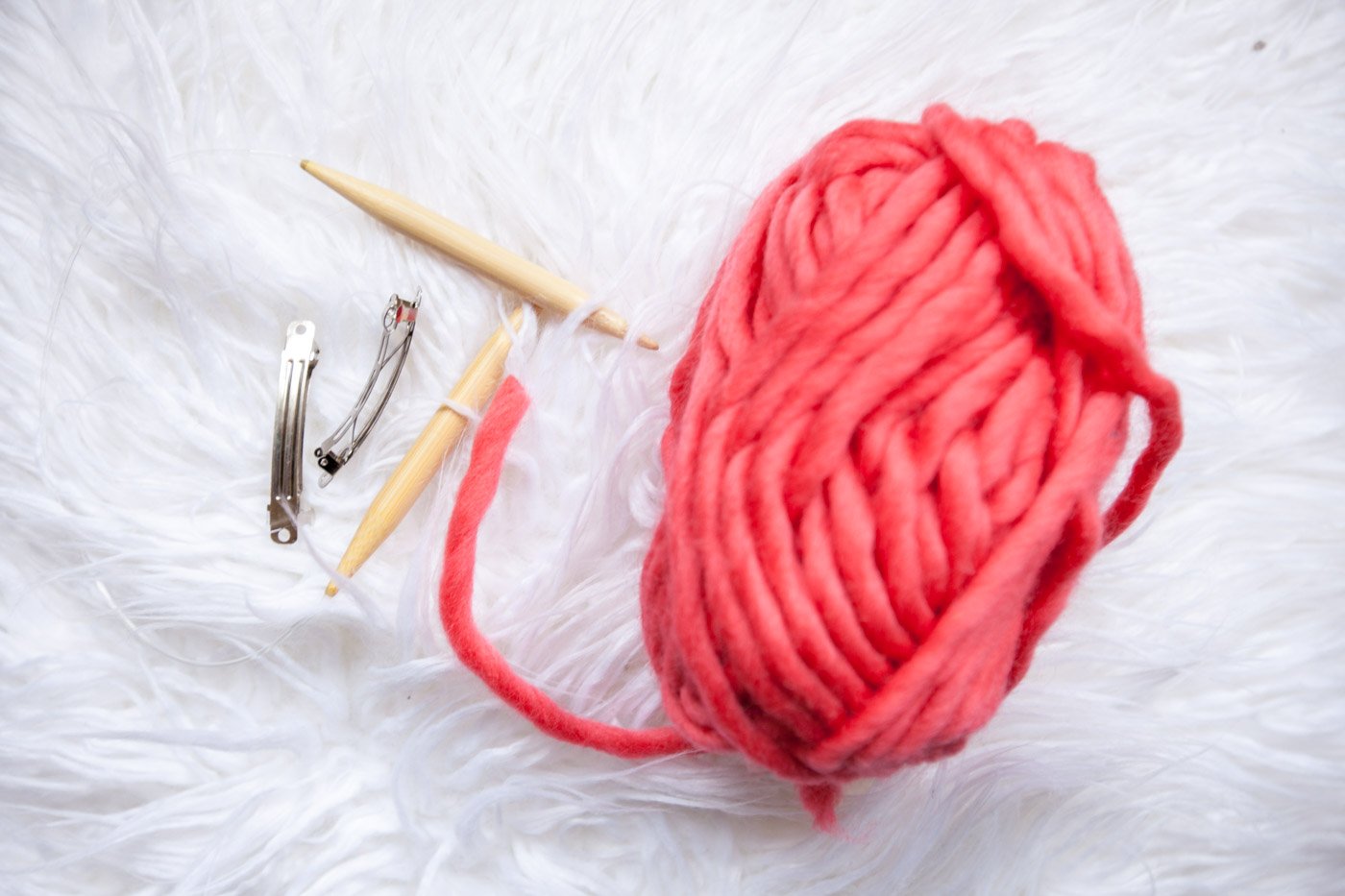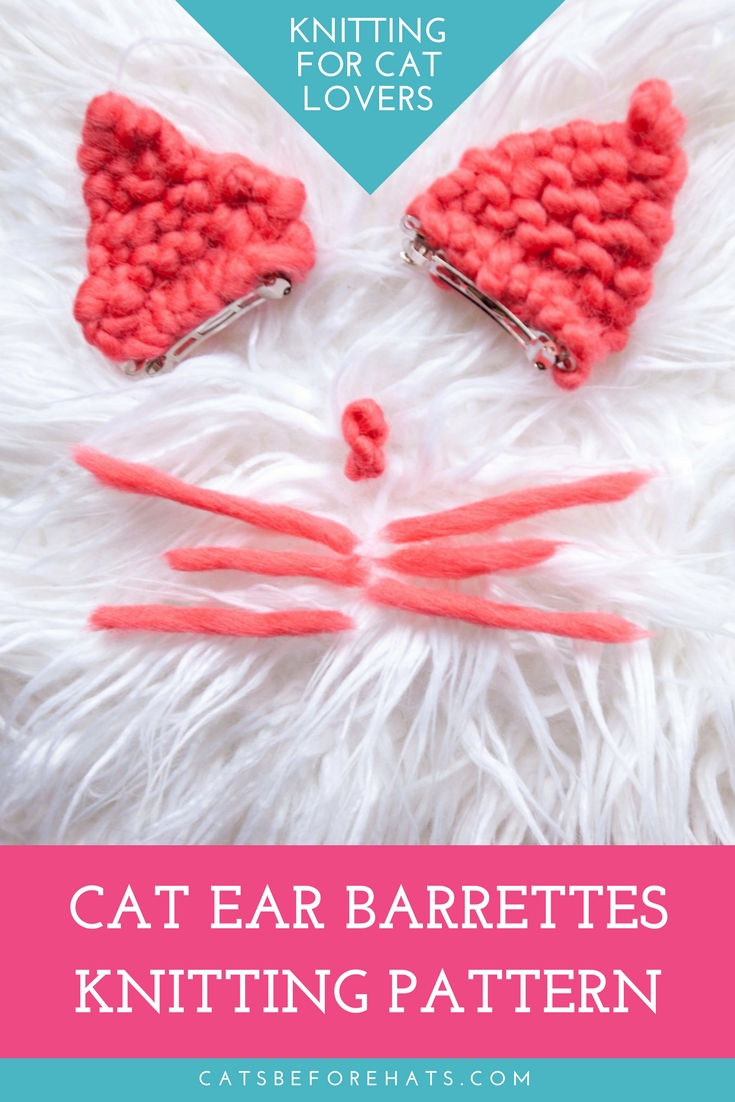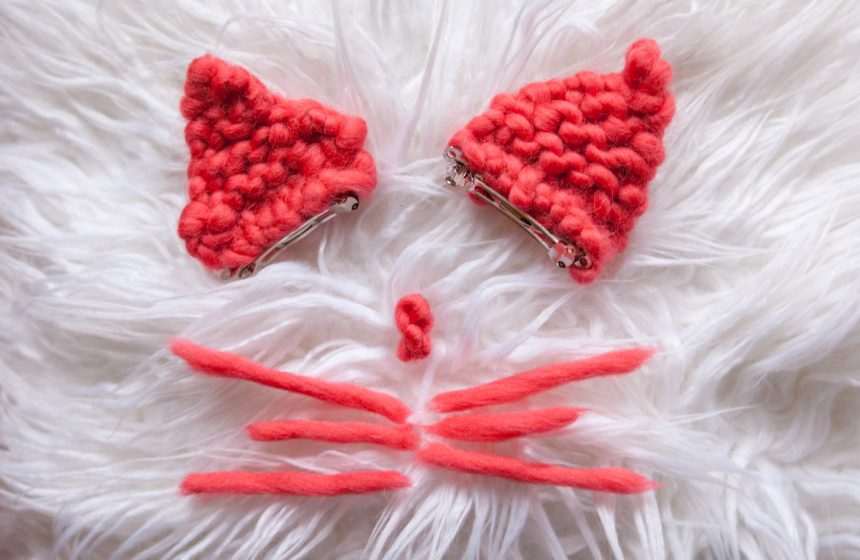THIS POST CONTAINS AFFILIATE LINKS FROM WHICH WE MIGHT MAKE A COMMISSION.
Do you ever wish you were a cat? They get to nap all day, don’t have to take showers, have no responsibilities, and are pretty much fed on demand. Seems like the life to me. Of course, if I can’t be a cat I can at least spend a lazy day here and there napping, not showering, avoiding responsibility, and ordering delivery. Which is kind of the same thing.
This cat ear barrettes knitting pattern is super easy and a perfect (or should I say purrrfect) quick project for lazy days just like that. I finished knitting both ears in well less than an episode of Black Mirror. And it only took so long because I kept getting distracted (by both the TV and the cats) and messing up and having to start over.
The trick to knitting these cat ears is to try to keep the yarn a bit loose. It’s a tight pattern that starts with casting on just one stitch followed by a quick succession of increases and ends by knitting straight onto a barrette. This last step makes the pattern both simple, because you don’t have to cast off and figure out how to attach it, and difficult, because have you ever tried knitting with a barrette as a needle? It’s not as easy as it sounds.
So maybe you never will actually be a cat. But you can at least knit some cat ears and pretend (purrrtend?) while napping in bed with cats. And that may just be almost as good anyways.

Cat Ear Barrettes Knitting Pattern:
Yarn
Super Bulky (Shown here, KnitPicks Tuff Puff Super Bulky yarn in Conch)
Gauge
2.5 sts = 1″ on #15 needles
What You Need
US13 needles
2 2¼-inch barrettes
A tapestry needle to weave in ends

Glossary
K: Knit
KFB: Knit Front and Back
Instructions:
Remove the spring and clip from the barrettes, set aside.
Cast on 1 stitch using long tail cast on.
Row 1: K1
Row 2: KFB
Row 3: K2
Row 4: KFB2
Row 5: K4
Row 6: KFB1, K2, KFB1
Row 7: K6
Row 8: KFB1, K4, KFB1
Row 9: K8, loosely
Switch working needle with barrette
Row 10: K8 using barrette as working needle
Cut off yarn and weave in both ends with a tapestry needle.
Adjust ear to stand upright on the barrette.
Replace the spring and clip on the barrette.
Repeat on second barrette to get two cat ears.

